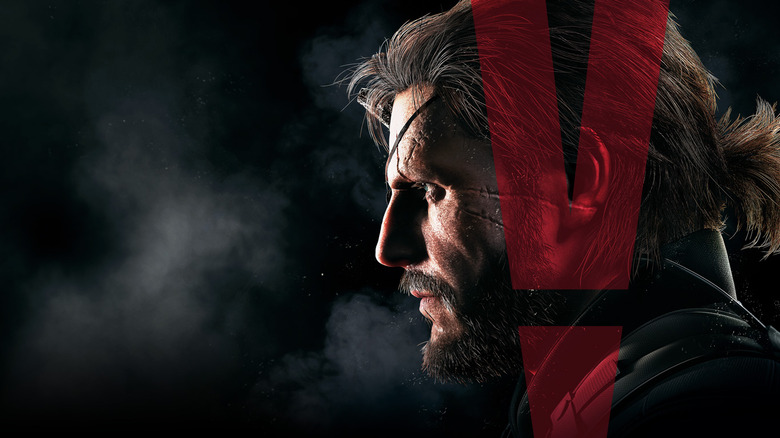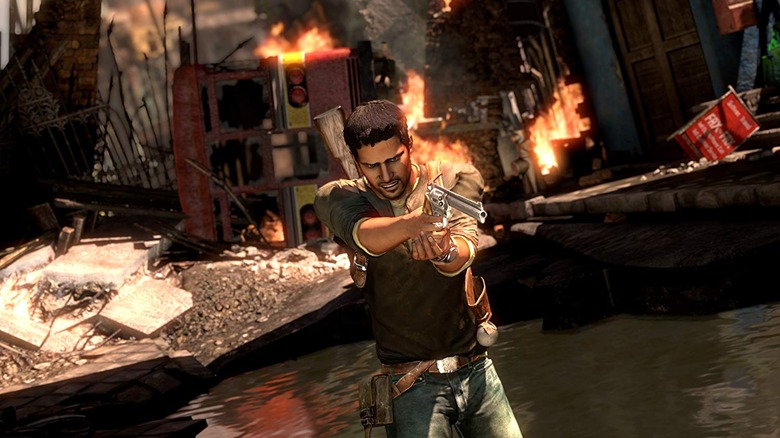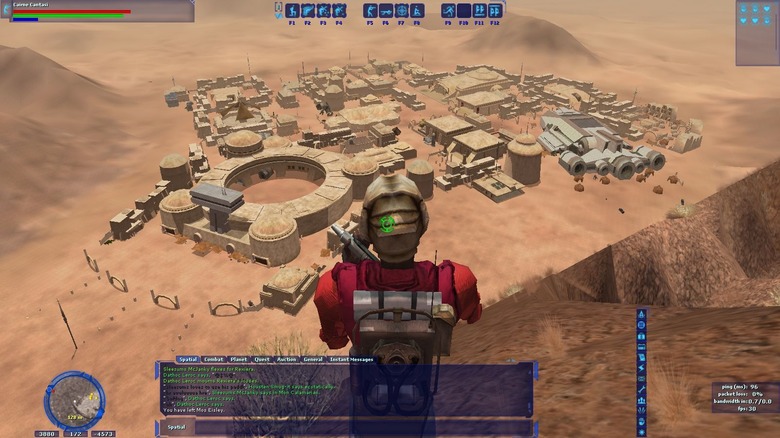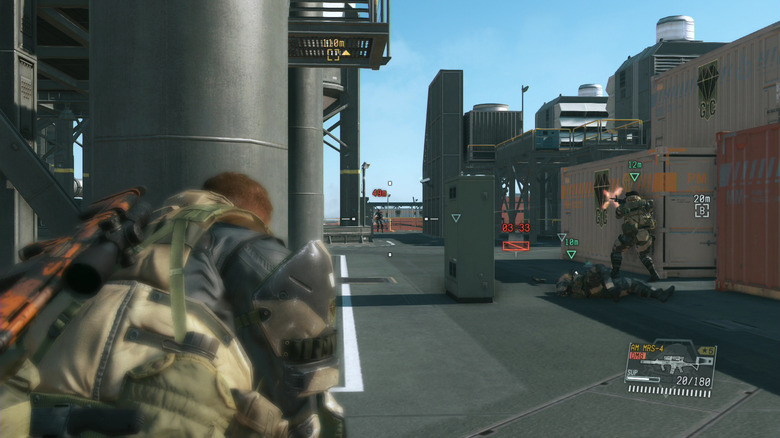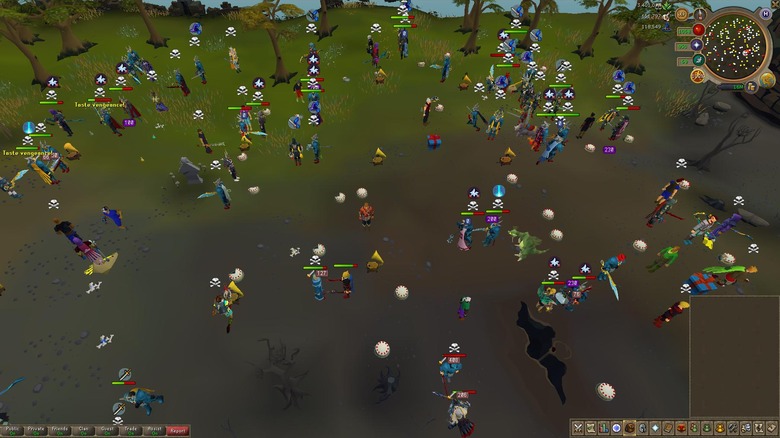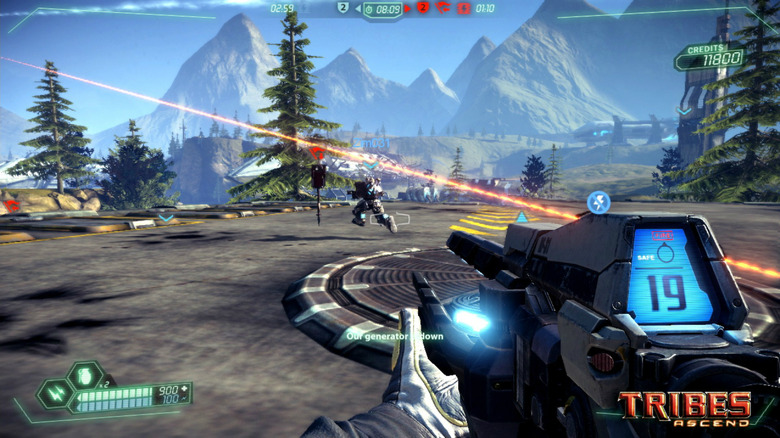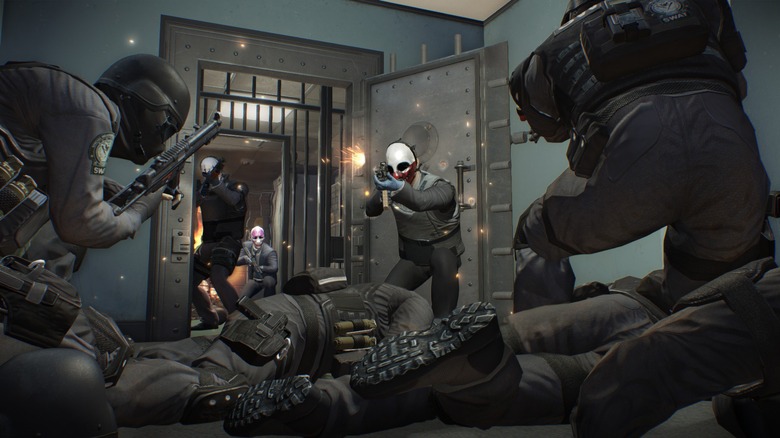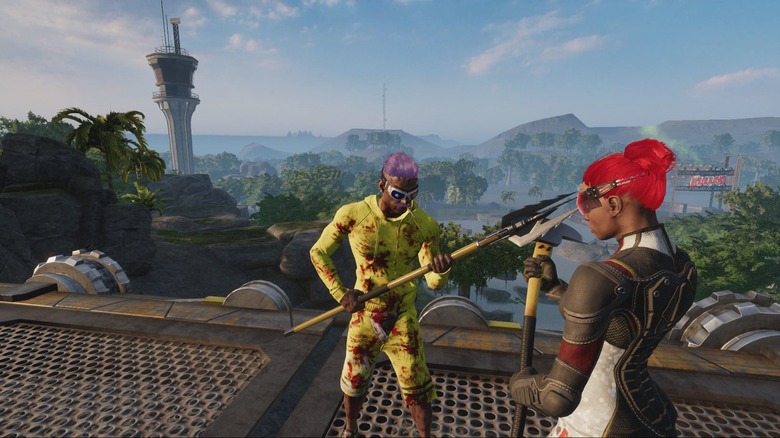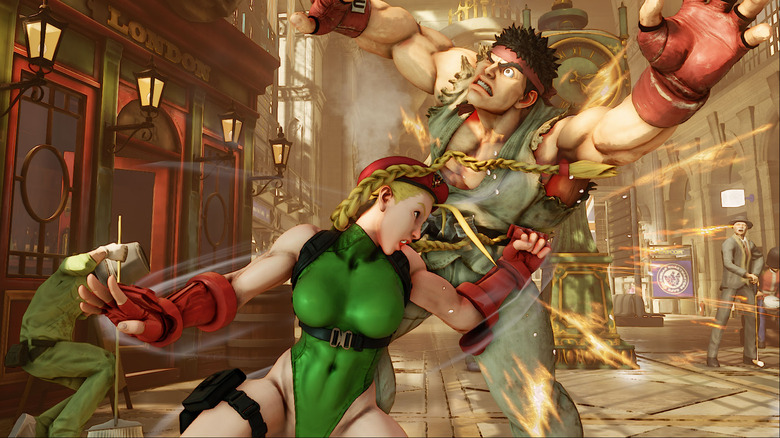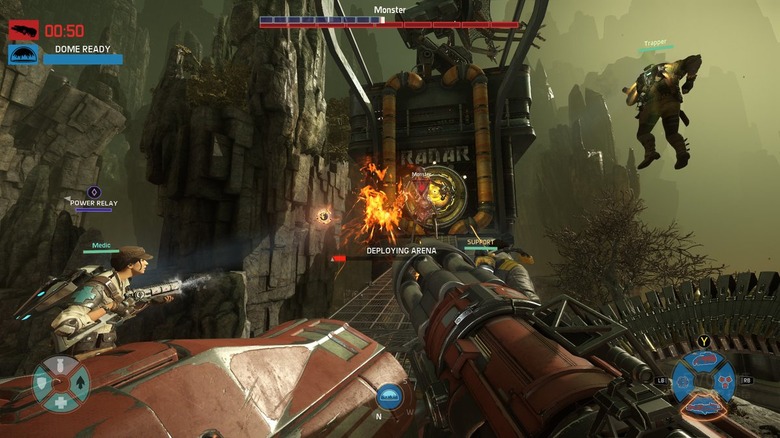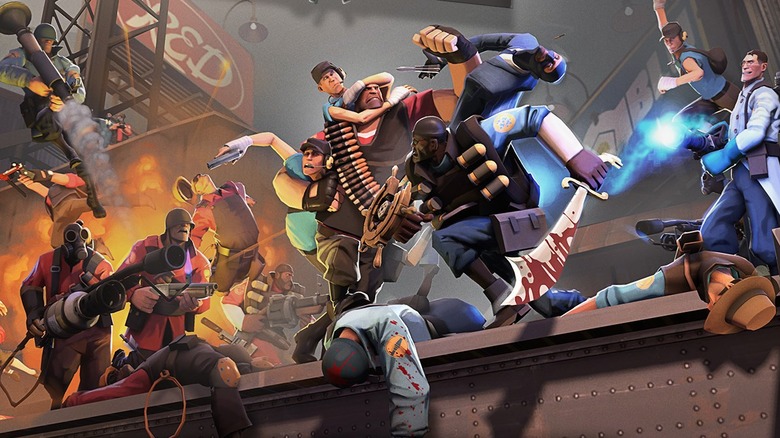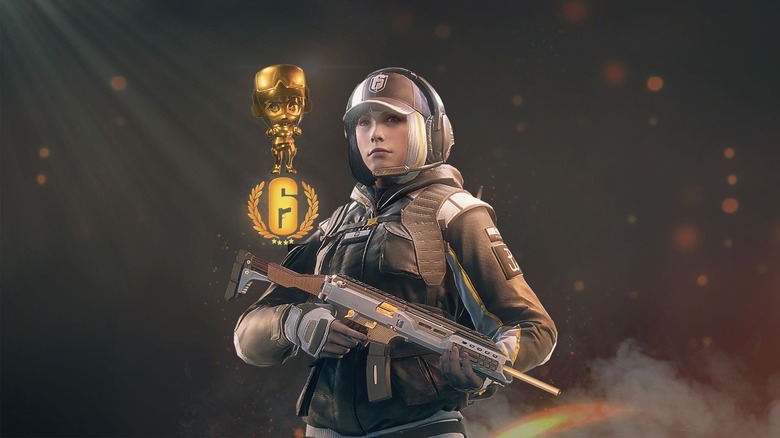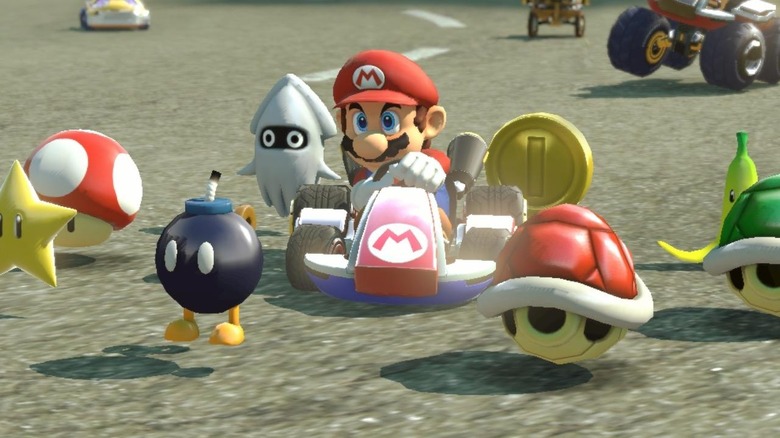Massive Updates That Ruined Great Games
The benefit of internet connections for video games is often overlooked now that the technology has been around for a while. Functionally, though, our ability to connect to servers, download patches, and fix problems in games that have already shipped is one of the most important pillars of the industry today. As games continue to grow larger in scope and ambition, fixing the many unforeseen bugs that emerge remains a necessity.
While we typically look at updates, especially ones that are larger in size, as boons, that isn't always the case. Sometimes a game is doing just fine and suddenly gets an update that breaks things. It doesn't happen often, but there has even been several instances in which a new update ruins what was already a good title. With that in mind, here's our list of massive updates that ruined great games.
1.05 Title Update - Uncharted 2: Among Thieves
Uncharted 2: Among Thieves is a great game. Developer Naughty Dog is a team of some of the most brilliant minds in gaming, and the studio brought some of its best level design and wit to the single-player experience in Uncharted 2.
The surprising thing about the title, though, is that it actually had a burgeoning multiplayer community. Uncharted 2 had some addictive multiplayer that offered some innovation to what was already a crowded genre thanks to games like Halo and Call of Duty. The philosophy was simple: Uncharted 2 let players live for longer, creating more memorable experiences within a match. With maps that were designed to host skirmishes that could see one player chase another for several minutes through environmental obstacles, it was something unique.
Then, the 1.05 Title Update happened. Out of nowhere — and, more importantly, without being asked by the community — Naughty Dog completely rebalanced Uncharted 2's multiplayer. Players were easier to kill and went down much faster, making the game feel much more like a Call of Duty clone. Weapon rebalancing made every gun feel mediocre without anything truly standing out, and the gameplay experience took a nosedive immediately after.
Fans campaigned to have the update rolled back, but Naughty Dog never obliged them, and Uncharted 2 went down in history as one of the formerly best multiplayer games ever released.
The NGE - Star Wars Galaxies
Star Wars Galaxies released into a market that was clamoring for the next big MMORPG after Everquest had proven the genre had some serious potential. Following its 2003 launch, the game remained popular for two years before it all came crashing down in November 2005. Developer Sony Online Entertainment unleashed New Game Experience (NGE) into the wild, a patch that completely altered the way the entire game was played.
Star Wars Galaxies saw a robust character advancement system become a joke overnight, with players gifted Force-wielding classes from the start, invalidating the grinding of much of the playerbase. The update actually removed some people's trades altogether, rendering years of play obsolete in a matter of a day. In the years following NGE, it became clear it was an attempt to make the game more like Blizzard Entertainment's World of Warcraft, but that's cold comfort to the legions of Galaxies fans who saw their Star Wars safe haven melt away as players began to seek greener pastures after the update.
Quietly adding microtransactions - Metal Gear Solid 5: The Phantom Pain
Metal Gear Solid 5: The Phantom Pain marked the end of an era for the franchise, as series creator Hideo Kojima was unceremoniously removed from his position after a very public falling out with publisher Konami. All things considered, then, MGS5 is a remarkably great game, infused with all of the wild-eyed creativity that has come to define a Kojima joint.
Better still, MGS5's online multiplayer was actually pretty fun, and had players working hard toward achieving a global event that could only be unlocked as the community made progress toward it together. Then, the microtransactions came, and what could have been a healthy online scene ended up so barren that players might have been forgiven for thinking a nuke had gone off.
Konami released an update in November 2015 that changed the way the online grind worked. It was obviously predatory, and tried to force people into spending money to reduce the amount of time upgrades took. What had previously taken a maximum of just three hours could now take as much as 12 days to complete without purchasing items to speed it up, and people reacted about as negatively as you'd expect. The addition of pseudo-forced microtransactions destroyed any chance MGS5 had at maintaining an online presence.
Real-world trading or riot
Believe it or not, back in the day RuneScape was considered to be one of the better MMORPGs. The game had a lot going for it besides its somewhat simplistic graphics, including a deep skill system that rewarded players for doing what they liked. It also supported one of the earliest real-life online economies in gaming history, as players bought and sold gold and items within the game for real currency.
However, doing so was against developer Jagex's terms of service agreement, and the company had been notoriously vocal about its dislike of the practice. Yet the measures Jagex took in 2007 to combat gold trading in RuneScape left the game much worse of afterwards.
In 2007, Jagex attempted to stop the exchange of real life money by locking people out of the ability to give people free stuff via trade, while simultaneously altering the way PvP worked by making it harder to claim someone's items when they discarded them or dropped them as a result of dying.
Fans weren't happy and riots broke out across RuneScape in protest. Eventually, those died down and players simply left the game instead.
Gotta go ... slow? - Tribes: Ascend
Tribes: Ascend was all about one thing: moving quickly. Released in 2012, Ascend became a popular multiplayer title by offering a refreshing alternative to the kind of shooter slogs that were common at the time. Ascend was a lot closer to Quake than Call of Duty, and it gave players something new to try while still offering classic capture the flag gameplay for veterans of the multiplayer shooter genre.
Unfortunately, that popularity just wasn't meant to last. Developer Hi-Rez implemented an update that added "flag drag" to the game, which capped a flag carrier's speed, making them easier to catch. In a game that was ostensibly about going as fast as possible, Hi-Rez had punished players for attempting to complete the objective by slowing them down.
As a result of flag drag, online games of Tribes: Ascend began to slow down to a crawl. What was previously all about speed became more about turtling down in an area and using the heavier, slower classes. The things that had made Ascend unique had evaporated, and what was left was something that was constantly fighting its own design philosophy, creating unfun gameplay.
Even worse? The patch was never really fixed, Tribes: Ascend eventually faded away and shut down, and players are still upset about it, with many of them accusing Hi-Rez of abandoning it in favor of Smite.
Crimefest - Payday 2
Remember Payday 2? It was one of the more popular online games following its release in 2013, and it followed players attempting a heist. It was one of the first highly streamable multiplayer titles that explicitly targeted Twitch as a demographic, and it paid off in spades. Developer Overkill Software had earned the trust of its players by producing quality content while constantly reassuring them that Payday 2 would never contain microtransactions. Then, the Crimefest event was patched in, and it was as if Overkill Software had attempted to simulate a bank robbery gone wrong in their own financial department.
In Crimefest, Overkill introduced two safes that could only be unlocked with special drills; they just happened to cost $2.50 a pop. The safes contained unique skins, stats, and skills that were randomly rewarded upon opening them, so it wasn't like they were purely aesthetic, either. Some of the paid weapons were clearly superior to the weapons free-to-play players had access to.
Fans were furious. Overkill hardly attempted to apologize, simply adding the drills to the loot pools of games mid-way through Crimefest and pretending nothing was wrong. It was a huge slap in the face to fans, and they responded by leaving the game in droves. Payday 2 never bounced back.
Culling your own community - The Culling
The Culling was way ahead of its time. It was released in its early access phase on Steam in March 2016 and served as a harbinger for what would become one of the biggest genres in gaming: battle royale. By all accounts, The Culling should have been the de facto game to beat in that field, and early feedback was favorable.
Unfortunately, each patch update released by developer Xaviant began to distance the game from its roots. Fans didn't really understand why, but what had previously been enjoyable and campy began to get bogged down by weird balance patches that didn't really address the issues the community had with The Culling.
For a game that used to enjoy strong concurrent numbers on Steam, especially for an indie title, The Culling fell further apart with each patch released for it. Fans began leaving the game in droves when an oddly-timed balance update ended up slowing the game down significantly, leaving a competitive multiplayer meta that was just too frustrating to deal with in the summer of 2016. The Culling's time in the sun was brief before it burned out, but if it had been left relatively untouched or received better updates, the entire gaming industry might have looked a little different.
The buff get buffer - Street Fighter 5
Street Fighter has always been a bit weird in the sense that Capcom's balancing has been hit or miss since the very beginning. Whereas other games really struggle when imbalance becomes a thing, though, Street Fighter has remained resilient and playable through most of these eras, and has ended up spawning some of the most recognizable gaming talent in the fighting game community over the course of its rich history.
Street Fighter 5 had its issues at launch, but was still considered to be one of the better iterations of the series when it released in 2016. Initial patches saw the game gradually find its footing, and many hoped by early 2018 for just a few more balance patches to tweak things to perfection. Then, the game did get a patch. A patch so bad that fans thought it was an April Fool's joke. In reality, it was a grim nightmare for the community, and stifled any momentum the game had going into the second half of 2018.
What went wrong? The patch inexplicably buffed the best characters in the game while delivering nerfs to characters mired in the bottom tier. For some reason, Capcom had only widened the divide between playable and unplayable fighters. Needless to say, the update soured trust in Capcom's decision making and in the viability of the game moving forward.
Stage Three: shutting down - Evolve
Evolve is one of those games fans will look back on and wonder why it ended the way it did. Initially, Evolve had a lot of promise, featuring Left 4 Dead-inspired team gameplay mixed with some wild interpretations of monster hunting and character classes. It was an innovative look at a genre that still had a lot of room to grow, and developer Turtle Rock Studios looked well-equipped to help fulfill that promise in 2015.
Balancing issues and launch DLC plans had other ideas, though. The game looked transparently like a money grab due to a variety of complex DLC plans, and the initial hype for the game was stifled by publisher 2K Games' bizarre treatment of its post-launch.
Efforts to revive the game, which still played great, made things irrevocably worse. Evolve: Stage Two was a relaunch and huge update to the game, but it departed from the core ideas that were showcased with such aplomb in the game's early alpha stage, resulting in fans leaving Evolve in the dust. The game fell out of the top of Steam's concurrent numbers well before that, but completely vanished after Stage Two, and the servers were shut down in 2018 after they became a ghost town.
Meet your maker - Team Fortress 2
Team Fortress 2 is a goofy game at heart, and one that was never really afraid to embrace that role in order to distinguish itself. That decision, and that charm, made Team Fortress 2 a staple of the scene for years.
Then, Team Fortress 2 got competitive matchmaking in a huge update released in 2016 called Meet Your Maker. If the name sounds familiar, that might be because it is so commonly cited by fans of the game as the worst patch it has ever received. It was a complete mess, and butchered the separation of competitive and casual matchmaking. There were too many skill ranks, which sometimes made it difficult to tell what the differences between each one really entailed. This made matchmaking more lopsided than it needed to be. Casual matches were even worse when it came to balancing player skill, and it sucked the fun out of both of its scenes.
Two years later, Valve addressed the issue in an update the developer released in 2018. By then, it was too late; the game's players had become extremely frustrated by the state of Team Fortress 2 and, while the diehards remained, the game had certainly lost a lot of its luster.
Patching in a total disaster - Rainbow Six: Siege
Rainbow Six: Siege is a beautiful game that was ruined, for a time, by a patch that was so unbalanced that it threatened to drive out nearly all of Siege's playerbase in one fell swoop. The issues with patch 2.3.1 are well-documented, but here's a quick rundown: server issues on PS4 caused intermittent crashes, ruining ranked matches and causing players to avoid competitive altogether. Ela, a new operator, was pretty broken and desperately needed a nerf, provided people could actually finish a match with her without the servers crashing. A bad online experience and a bad competitive meta are a combination few games survive.
Players were absolutely furious, and the patch came only months removed from Operation Health, a three-month long initiative that was supposed to fix the game's many bugs and improve player experience a lot. At its core, the multiplayer in Rainbow Six: Siege was fantastic at the time; it's interesting to consider where the game would be now if it hadn't flirted with irrelevancy thanks to a a gigantic update that almost ruined the game.
Doubling down - Mario Kart 8 Deluxe
Mario Kart 8 Deluxe isn't really meant to be competitive in the way many of the games in this article are, but there's no dancing around the fact that it has a community of players who are chasing perfection.
Unfortunately, patch 1.2.0 changed the way items function in Mario Kart 8 Deluxe, making the game significantly more frustrating and, to be quite honest, pretty much impossibile to pursue competitively. It changed the way items work, giving losing players items that are designed to allow them to catch up.
In theory it sounded good, but in practice, it resulted in way tighter packs of racers, much more contested item blocks, and races that were essentially about who could spam the most mushrooms the fastest. That doesn't make for a great experience for either casual or competitive fans, and it made the game feel much more like Mario Party than Super Smash Bros. Blue shells also became much more likely since racers in the back of the pack would get access to them at increased rates as the race went on. All it takes is one blue shell to understand just how horrible that experience can be.

